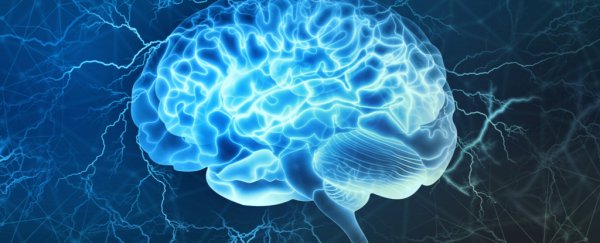That sea-horse shaped chunk of grey matter deep inside our skull called the hippocampus has a job on its resume we've never seen before – sensory enhancer.
New research has found activity in this part of the brain can connect with distant parts of the cerebral cortex to mediate sensory processes. More than just giving us insight into how the brain works as a whole, the find could have therapeutic benefits for those with conditions such as Alzheimer's.
The breakthrough discovery by researchers from the University of Hong Kong was made by using light to trigger nerves inside rat brains and then applying functional magnetic resonance imaging (fMRI) to watch the results.
It's an unfortunate fact that a significant amount of what we know about the brain is the result of studying the result of trauma. Trauma in various parts of the brain has led us to better understanding of what that region is really for.
The hippocampus is no exception – we know from a history of research on both living and deceased patients with damage to this part of the brain that it is important in memory formation and spatial awareness.
Those with damage to the hippocampus often suffer forms of amnesia, for example. Individuals with Alzheimer's are found to have significant loss of tissue in this part of the brain.
Other conditions are also linked with the hippocampus's functions, such as epilepsy and schizophrenia, suggesting there's far more to this part of the nervous system than meets the eye.
In recent years, neurologists have begun to explore how completely separate parts of the brain interact in what's described as functional connectivity.
Drawing conclusions on which brain bits are functionally connected isn't always clear – researchers can study which parts become more active following an event by using fMRI, but they need to apply some powerful statistical tools to evaluate their relationship.
Coming online at the same time might not mean two parts of the brain are working together as a unit, after all. There's also the question of how sections interact when they aren't in a highly active state.
It seems clear from the paths of the nerves stretching out from the hippocampus that it has its fingers in a bunch of processes.
"However, it is unknown whether and how specific hippocampal–cortical activity contributes to the brainwide functional connectivity," the researchers of this new study write.
To find out, the scientists used a process called optogenetic stimulation to activate hippocampus neurons in rats.
This process allowed them to toggle the degree of neural activation, from lower to higher frequencies, and look for any differences.
They then conducted scans to watch the effects of these activations ripple out across the whole brain.
The team discovered low-frequency activation of the hippocampus – the kind that takes place when we're in a deep sleep – is able to kick off activity across the wrinkled outer layer called the cerebral cortex.
This prune-skin surface covers a lot of real-estate, mostly because it governs a wide range of functions in bodies like ours. The cerebral cortex is where brains do their deep thinking, combining sensations, memories, language, and cognitive analyses to process consciousness and awareness.
There's a hell of a lot going on in these cerebral valleys and plateaus, and now it seems the hippocampus has far more of a hand in that than previously believed.
Testing the impact of this low-level stimulation on parts of the brain dealing with the senses, such as the visual cortex, suggested the hippocampus had a hand in enhancing sensations.
Put together, it's fair to think the cortex and the hippocampus share functionality when it comes to sensations, especially as we sleep, adding to its list of responsibilities in recording episodes in our life and mapping our surroundings.
Knowing this could potentially help us to understand (and maybe better treat) conditions ranging from epilepsy to Alzheimer's, while helping us better understand how our brains learn from sensory experiences.
Deciphering the vast network of nerve pathways inside our heads in terms of functions and actions has become big news over the past decade with the Human Connectome Project and China's new brain mapping venture.
As we continue to investigate how separate sections of the brain cooperate on tasks will, we'll no doubt discover even more functions we'd overlooked before.
This research was published in PNAS.
